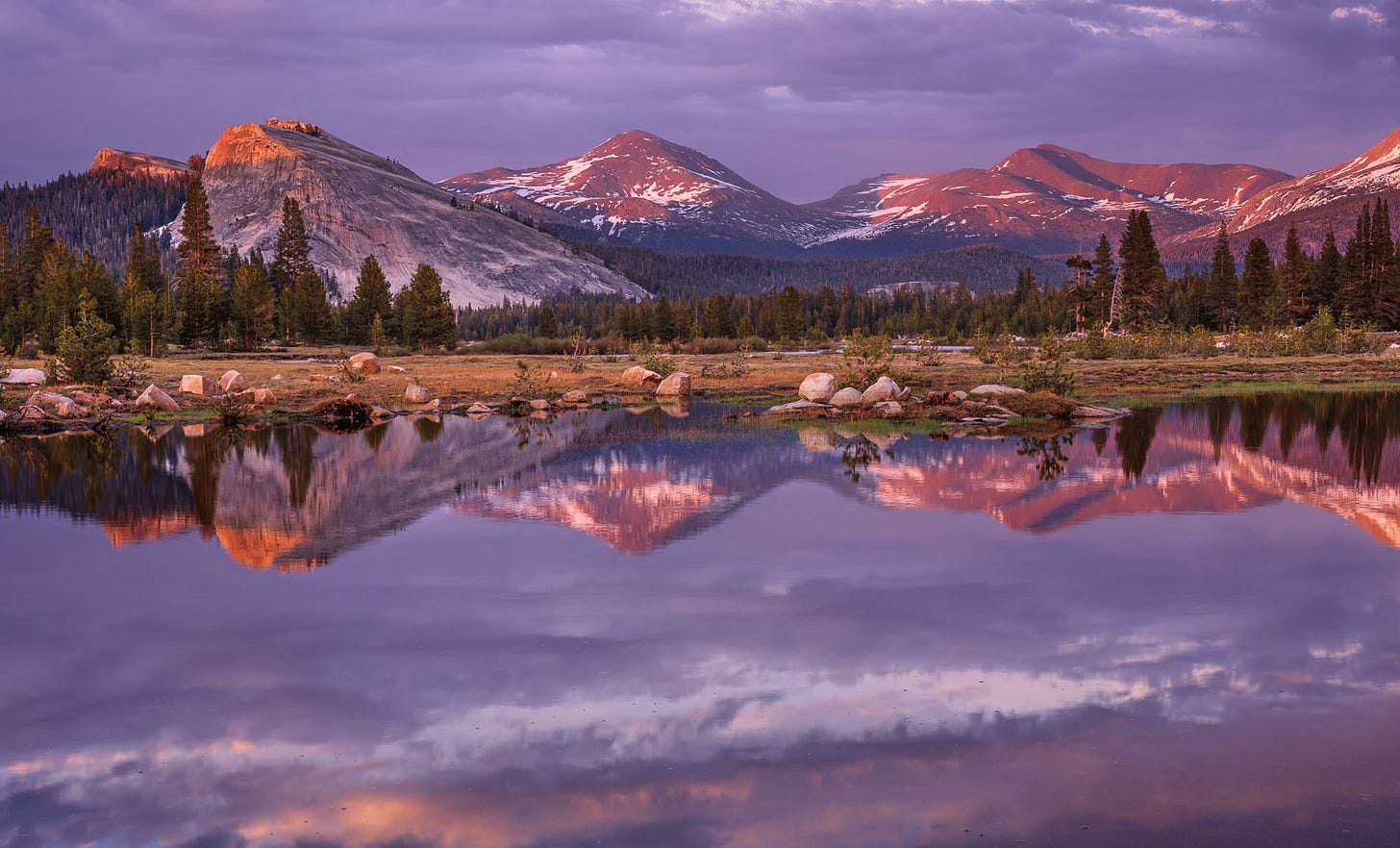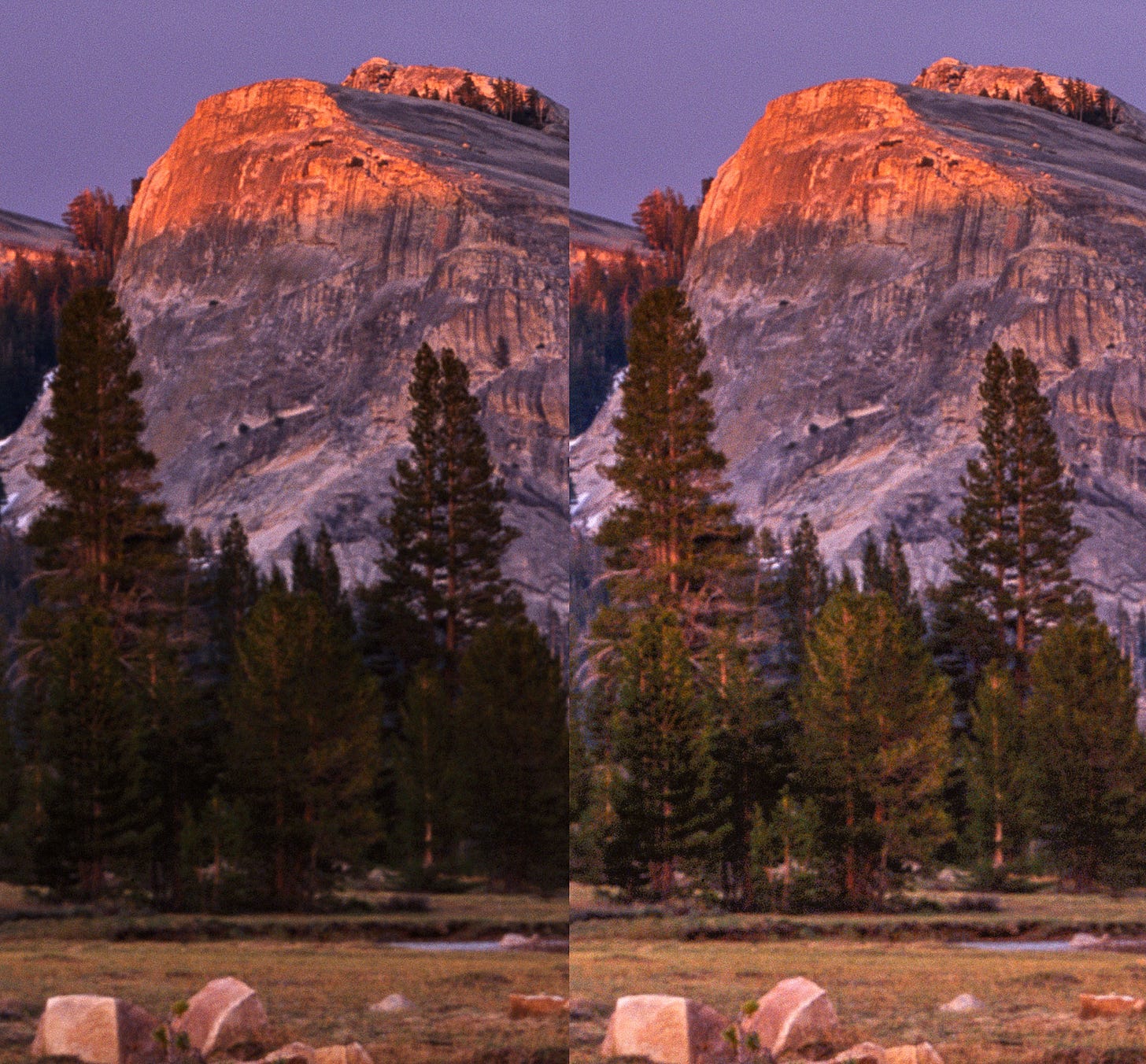Improving Shadows in Film Scans
One fact about processing photos that’s true is this: Film behaves differently than digital.
One of the challenges is shadows. While film captures a huge amount of information in shadows, a typical scan or digitization process doesn’t allow you to pull it all out. That’s what I ran into with this photo of Yosemite’s Tuolumne Meadows region, which was taken in some spectacular lighting conditions.
This image has languished in my to-do stack because the shadows were just too dark. It didn’t look right to me. As you may know, for my personal work, I work primarily in Photoshop, and when working from film scans, some of the tools we take for granted in Lightroom are not easily accessible. Photoshop offers a different set of options for adjustments than the many sliders of Lightroom. Normally that is a feature and not a bug, but in this case, I needed one of those sliders to improve this image.
One day as I was looking at this, I realized what I wanted to do was lift the shadows up with the shadow slider. If it was a digital camera file, that is what I’d do. But my experience with film made me hesitant to do that because it can look really bad when the shadows from a scan are brightened too much. So, I had to push past that preconception, ask my favorite question, “what if?” and then answer it by trying to adjust it.
It took some work and understanding to make that creative leap. This file has a number of adjustment layers already on it, so accessing the shadows slider needed some creativity.
First, I converted the image layer to a smart object. That let me use smart filters with it, one of which is the Camera RAW filter that offers me the same adjustments as Lightroom or Adobe Camera Raw.
Then, I could go to the shadow slider and see what happened.
What happened was magical. The blocked-up tree line showed the color of the pine trees and the beautiful sunset light. The whole photo came alive in a new way.
I showed the result to a friend with many film scans like me, and got the, “That is really beautiful,” that is so nice to hear. Then I showed it to my wife and got the, “I want that on my wall,” that tells me it really impacted her. (My wife sold fine art photography at the Ansel Adams Gallery and helped me run West Coast Imaging for nearly two decades, so I trust her experienced eye.)
For me, it means I will see my existing work with new eyes and new possibilities, and that gives me the chance to get more rewarding results from them. Before I was reluctant to put this photo in my “best” pile, but now it has become a new favorite because it captures something I love to see and experience.
All that made me think that I should share this with you. I know a lot of you have film scans as part of your body of work, and my client base still sells many photos made with film. This technique gives you yet another way to elevate the work in your archives and may help you mine some new treasures from your collection of photographs.




